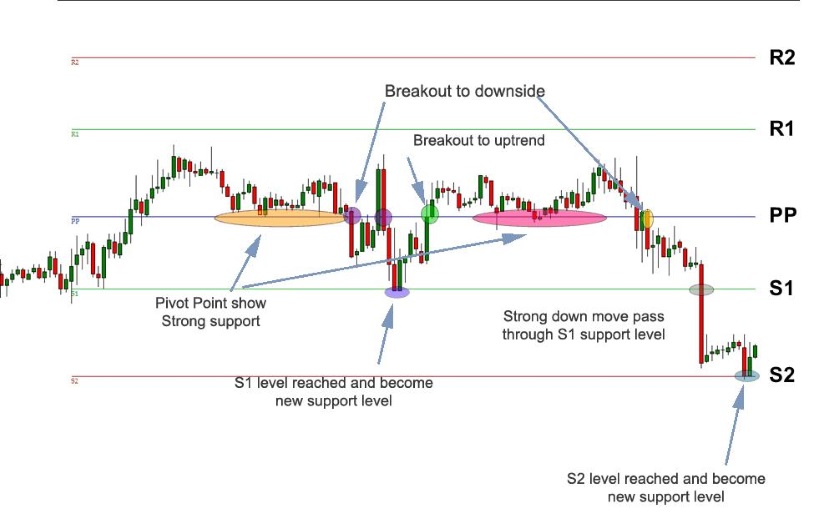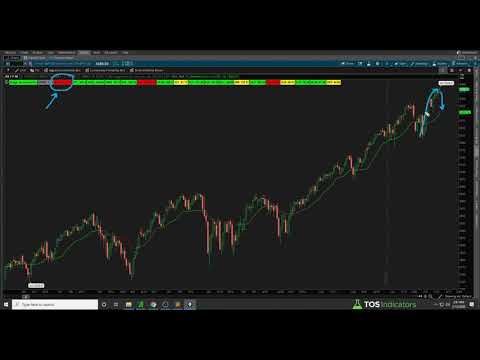
Whether you should invest in the S&P 500 or not is entirely dependent on your overall investment objective. These are questions that will help you decide whether investing in the S&P 500 is right for you. Be sure to consult with a financial professional to make the best decision for your money. Index funds that track the S&P 500 typically own most or all of the stocks included in the benchmark index so that they can mimic the performance of the index as closely as possible. They then sell shares of the fund so investors like you can buy exposure to their hundreds of constituent investments. In order to buy investments, you’ll need to open a brokerage account if you don’t already have one.
- The first ETF was introduced by a subsidiary of AMEX 17 years later, allowing investors to begin tracking the index.
- Bankrate’s editorial team writes on behalf of YOU – the reader.
- Consequently, they are highly liquid and subject to intraday price fluctuations.
A buy-and-hold strategy using stock mutual funds, index funds and ETFs is generally a better choice for beginners. Vanguard recommends international stocks make up as much as 40% of the stocks in your portfolio. You can purchase international stock mutual funds to get this exposure. But mutual funds are unlikely to rise in meteoric fashion as some individual stocks might.
Wealth managers usually charge their clients a percentage of assets under management (AUM) as their fees. It’s important to find a balance between maximizing the returns on your money and finding a comfortable risk level. For example, high-quality bonds, such as Treasury bonds, offer predictable returns with very low risk, but they also yield relatively low returns of around 4% to 6%. By contrast, stock returns can vary widely depending on the company and time frame. However, the overall stock market has historically produced average returns of almost 10% per year.
Full-Service Brokers
An ETF is a basket of companies pooled into one fund, and shares trade daily amongst individual investors, like buying and selling individual stocks. A mutual fund is a basket of investments managed either actively or passively by an investment company. Investors purchase shares of mutual funds directly from the company rather than individual investors. Some investors opt to invest based on suggestions from automated financial advisors.
The type of investment you choose might likely depend on you what you seek to gain and how sensitive you are to risk. Assuming little risk generally yields lower returns and vice versa for assuming high risk. Investments can be made in stocks, bonds, real estate, precious metals, and more.
What Are Some Types of Investments?
The investment information provided in this table is for informational and general educational purposes only and should not be construed as investment or financial advice. Bankrate does not offer advisory or brokerage services, nor does it provide individualized recommendations or personalized investment advice. Investment decisions should be based on an evaluation of your own personal financial situation, needs, risk tolerance and investment objectives.
How to Invest in the S&P 500 – MoneyWise
How to Invest in the S&P 500.
Posted: Wed, 23 Aug 2023 01:47:31 GMT [source]
Like direct stock plans, though, you’ll have to seek out the companies that offer these programs. A limit order gives you more control over the price at which your trade is executed. On the selling side, a limit order tells your broker to part with the shares once the bid rises to the level you set. The act of placing market orders repeatedly and on a regular timeframe (e.g. buying stocks at the market price every two weeks, on payday) in order to buy in at the average price over a long time period. Rebalancing helps ensure your portfolio stays balanced with a mix of stocks that are appropriate for your risk tolerance and financial goals.
Other Considerations for Investing in the S&P 500
Standard & Poor’s estimates that since 1926, dividends have contributed nearly a third of total equity return for the S&P 500 while capital gains have contributed two-thirds. Risk and return expectations can vary widely within the same asset class. For example, a blue chip that trades on the New York Stock Exchange will have a very different risk-return profile from a micro-cap that trades on a small exchange. It is the act of allocating resources, usually capital (i.e., money), with the expectation of generating an income, profit, or gains. This article is for informational purposes only, and it is not intended to be investment advice.
FACT SHEET: White House Releases New Technical Assistance … – The White House
FACT SHEET: White House Releases New Technical Assistance ….
Posted: Wed, 13 Sep 2023 16:00:00 GMT [source]
Many brokerages offer a tool that converts dollar amounts to shares, too. This can be helpful if you have a set amount you’d like to invest — say, $500 — and want to know how many shares that amount could buy. Don’t be shy about asking for a fee schedule or chatting with a customer service representative at an online brokerage or robo-advisor to advise you on fees you might incur as a customer. You can opt for any one of the following approaches or use all three. How you buy stocks depends on your investment goals and how actively involved you’d like to be in managing your portfolio.
Bearish leveraged funds short the S&P 500 to pull in positive returns when the index falls. Investing in an S&P 500 ETF or fund is a single-ticket solution to get exposure to many of the world’s most dynamic companies in the largest economy. It eliminates having to spend countless hours analyzing and picking stocks.
How To Invest in Stocks
Fund your first taxable investment account with at least $500 in the first 30 days of account opening and earn a $50 bonus. So if you want to invest in the spectrum of the US stock market, and in effect the US economy, the S&P 500 is a good entry point. Kevin Koehler, chartered financial analyst and director of the investment strategy group at Miracle Mile Advisors in Los Angeles, also notes drawbacks in the S&P 500 related to its market-cap weighting. The S&P 500 is made up of about 500 large public U.S. companies.

Trevor Jennewine has no position in any of the stocks mentioned. The Motley Fool has no position in any of the stocks mentioned. Indeed, after Fed policymakers forecasted a recession in March, Fed Chair Jerome Powell walked that statement back in July, saying central bank economists no longer expect a downturn. In October 2022, Hanke told Fortune that significant inflation has never occurred without a dramatic increase in money supply. He blamed Fed policymakers for flooding the economy with cash during the pandemic, and he blamed the Fed again for overtightening to combat inflation.
So an S&P 500 ETF exposes the investor to all of the stocks in that index. Index ETFs are generally low-cost and trade throughout the day just like stocks. Consequently, they are highly liquid and subject to intraday price fluctuations. Vanguard introduced individual investors to the U.S.’s first mutual fund in 1976. The first ETF was introduced by a subsidiary of AMEX 17 years later, allowing investors to begin tracking the index. Investors should always be aware of common risks before investing in the S&P 500 index.
Having too high expectations in regards to your expected returns can cause you to sell your shares too quickly, resulting in a net loss or a smaller overall gain. This is why both financial advisors recommend that you buy funds that track the S&P 500 and provide one-stop shopping for those looking to invest in the index. You can do this in a tax-advantaged account like a 401(k), IRA, HSA, or 529 plan. You could also open a taxable brokerage account to purchase an S&P 500 index fund. Index funds allow you to invest money on an automated recurring basis, but if you’d prefer to invest manually you could go with an S&P 500 ETF. The best way to invest in the S&P 500 is to buy exchange-traded funds (ETFs) or index funds that track the index.
- The market order could also not be fulfilled if you were attempting to purchase a very thinly traded stock with little volume.
- This variation of a traditional S&P 500 index allows investors to feel as though they are investing in companies they believe in while still diversifying their investments across multiple avenues.
- For most people who are just trying to learn stock market investing, this means choosing between a standard brokerage account and an individual retirement account (IRA).
The upside of individual stocks is that a wise pick can pay off handsomely, but the odds that any individual stock will make you rich are exceedingly slim. When you invest in a fund, you also own small pieces of each of those companies. You can put several funds together to build a diversified portfolio. Note that stock mutual funds are also sometimes called equity mutual funds. S&P 500 index funds also trade through brokers and discount brokers and may also be accessed directly from the fund companies.
Unfortunately, you can’t directly invest in the S&P 500 — it’s a stock market index, or group of stocks, not an individual stock itself. But there are vehicles that you can invest in, called index funds, that act as a proxy for this proxy — duplicating its list in their portfolios and mimicking its performance. You can either open an account with the broker that offers the fund you want, or you can simply open an account with your preferred broker. Many of the major brokers offer their own index funds but they tend to largely track the major indices, so performance should be similar across brokers. Risk and return go hand-in-hand in investing; low risk generally means low expected returns, while higher returns are usually accompanied by higher risk. Commodities and derivatives are generally considered to be among the riskiest investments.
What should you invest your money in?
Second, even though index funds tend to have steady returns, these returns are modest. Therefore, your chances of winning big on the stock market via an index fund can be minimal. That said, there are ways to find stocks that may be undervalued.

There are other index funds that track other indices, such as the Dow Jones Industrial Average (DJIA). But the broad array of companies in the S&P 500 are considered a microcosm of the U.S. economy. Companies’ stocks are chosen to appear on the S&P 500 by a committee within S&P Group.
Unlike index funds, however, which can only be traded once a day at the end of each trading day, ETFs can be traded like a stock—meaning their share prices can fluctuate throughout the trading day. But if you’re still keen to start investing without a broker, look for companies that offer a direct stock plan, which lets you purchase shares directly from the company for a low fee or no fee at all. These programs may also come with the advantage of investing by the dollar amount, rather than by the share, and often let investors set up recurring investments on a regular basis. Select the individual stocks, ETFs or mutual funds that align with your investment preferences and start investing.
Next, choose a fund such as those mentioned in the article above. Then, simply set aside an amount of money that fits your budget to make your first purchase. After you’ve opened your investment account and chosen which S&P 500 index fund or ETF you want to buy, the last upstream midstream downstream step is purchasing shares of the fund. To do this, simply look up the fund you wish to buy using the ticker symbol (like those in the graph above) or the fund’s name. And that’s without considering that the S&P 500 weights each company based on its market capitalization.
An online brokerage account likely offers your quickest and least expensive path to buying stocks, funds and a variety of other investments. The easiest way to invest in stocks is by purchasing individual stocks or stock funds through an online investment account, also known as a brokerage account. You can also invest in stocks through a robo-advisor or a financial advisor. With many brokerage accounts, you can start investing for the price of a single share of stock. Some brokers also offer paper trading, which lets you learn how to buy and sell with stock market simulators before you invest any real money. This information is not intended as a recommendation to invest in any particular asset class or strategy or as a promise of future performance.
But rather than trading individual stocks, focus on diversified products, such as index funds and ETFs. Although cost is an important factor, don’t forget to look at the performance of the fund. You can find the fact sheet for every investment on the website of the company offering the ETF or the mutual fund. If you’re unsure where to open an account, take a look at our top-rated investment apps.
You may want to manage your portfolio through an advisor or a broker, or you may prefer to manage a portfolio of funds that are all housed within a specific mutual fund provider. Investment companies like Vanguard create mutual funds and exchange-traded funds (ETFs) that track the S&P 500 index. Investing in one of these funds is equivalent to investing in the S&P 500 index.
DIY investing is sometimes called self-directed investing, and requires a fair amount of education, skill, time commitment, and the ability to control one’s emotions. If these attributes do not describe you well, it may be smarter to let a professional help manage your investments. A buyer of a company’s stock becomes a fractional owner of that company. Owners of a company’s stock are known as its shareholders and can participate in its growth and success through appreciation in the stock price and regular dividends paid out of the company’s profits. A robo-advisor is essentially the same thing as a financial advisor, except it’s automated and runs on algorithms. Investing money may seem intimidating, especially if you’ve never done it before.
Read our editorial guidelines and public equities research methodology to learn more about how we researched investing in the S&P 500. Again, doing this with a little assistance from a financial or robo-advisor https://1investing.in/ isn’t a bad idea if you don’t have a lot of experience already. This mutual fund is almost identical to the overall S&P 500 value, and it’s actively managed with a relatively high expense ratio.

